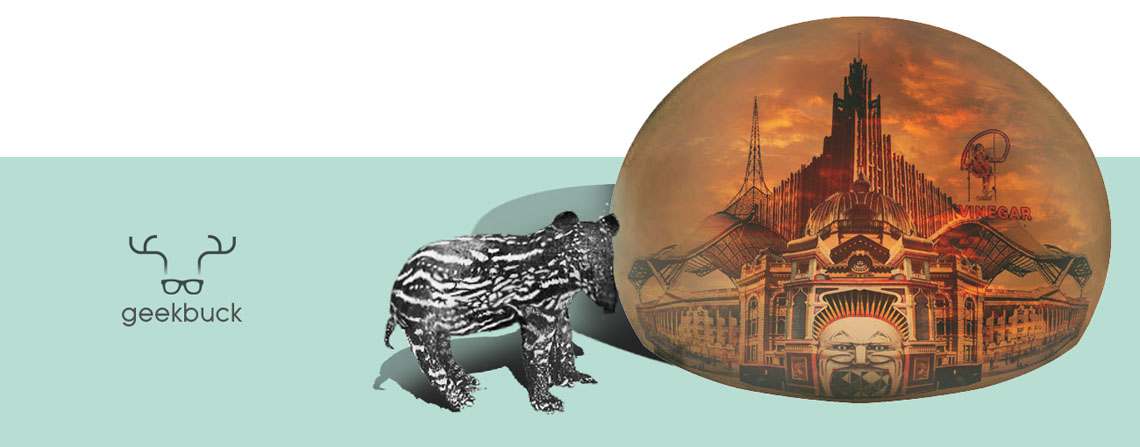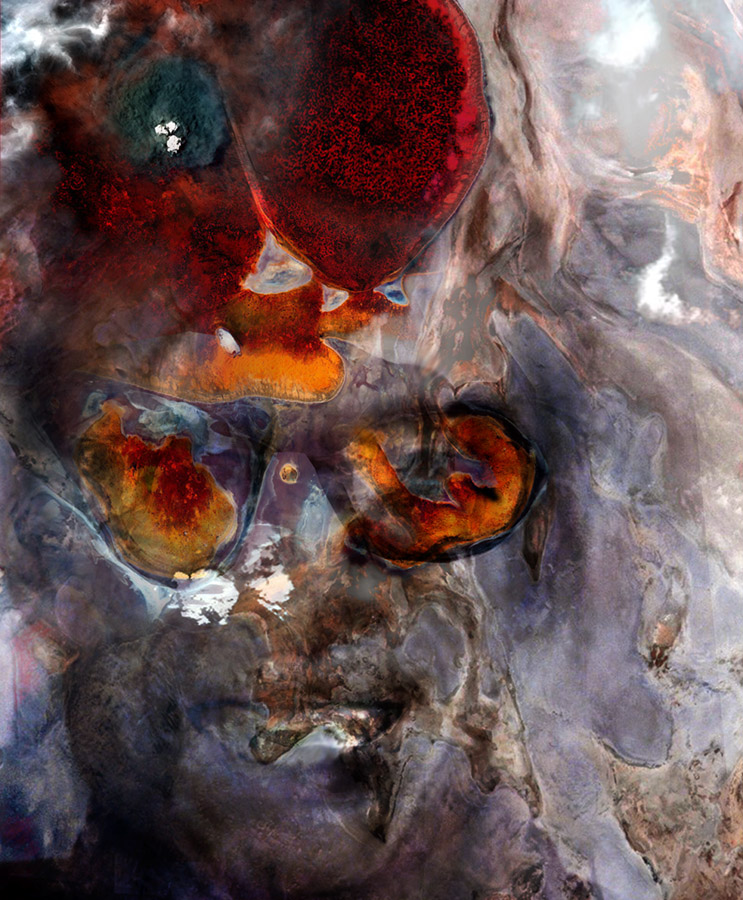So I've been working on an exhibition of my digital art for about a year and a bit. The working title of the exhibition is 'Gurgle' and it's going to be about the story of Icarus, taking the story a little past the point where his wings of wax have melted and he's falling into the sea.
I want to do a series of portraits that starts with these two-dimensional satellite caricatures (like the one above) based on these incredible images that have been sourced from Wikimedia Commons and NASA-released public domain photos. Imagine this: you're up in the air and everything is stylised and flat
— urban hieroglyphs and landscaped features. You just make out hints of people you knew; people that you've read about; a person you've spoken to briefly on a quiet evening on a tram to nowhere. But you're so far away and so caught up in your own journey that they're almost half-glimpsed in the landscape. And then these portraits advance and you go from being in-flight to this sudden crash
— a single portrait, fragmented:
The idea with the image above (featuring Nic) is a depiction of the sea as this splintering of the water surface, shattering in a series of glassy layers that stack-down beneath the waves. At the time I was conceptualising this, I was caught by the idea that if you were to fall from a great height into water, it'd be like smashing into concrete. But after researching it a little, it would've been more accurate to depict it as a glass of milk smashing into concrete... it appears that the falling body acts like a fluid because the forces that bind the body together become much smaller during the crash than the force pulling / pummeling the body into the water (
check out the analysis here — there's an interesting little tidbit about the
Reynolds number...). But I went with the original idea of the fragments
— for me it has that added dimension of speaking to the imagery of pieces of your life flashing by in bits, this kaleidoscope of memories that spark as you plunge down into the sea.
And that's where I take the story a bit further. How about you don't die as you're consumed by the sea. Instead, you're broken and dreaming and what follows is captured in a series of ethereal underwater portraits that permit you entry into their world. And you're caught in a new journey, following in the footsteps of
Jacques Cousteau (only you're missing the Yellow Submarine that inspired that Beatles Song:
the Anorep I)...
... or so my story of Icarus goes. Anyway, the funny this is that after I posted the second image that I'd created for the 'Gurgle' series (featuring my sister):
one of my secondary schoolmates,
Josh, now the
enfant terrible of the vibrant Singaporean literary community, reached out to see if we could collaborate on a post-apocalyptic story of Singapore after it gets swamped by this massive tidal wave in a post-climate change world. I was hooked by the story
— Josh is truly an amazing writer
— and we've spent the better part of the year working on the images with
Adam, an illustrator from Malaysia.
Anyway, back to the first image above. It's of Clement, one of my mates from secondary school and godfather to my son, and is primarily based on two pictures: one, a picture that we took up in Killcare, in a gorgeous restaurant up in Central Coast of New South Wales. The second is an image tweeted by the astronaut Scott Kelly
— taken as the International Space Station swung past Australia. When I'd completed the portrait, what struck me was how it kinda reminded me of Neil Gaiman's
'The Corinthian' from the Sandman series. And I thought (shamelessly): how cool is that?
Y'see, the Corinthian has three mouths
— one where you'd normally find a mouth, and two where the eye sockets are, often disguising itself with sunglasses. And the Corinthian has the uncanny ability to see the memories of others
— albeit through a horrendously violent method: it eats the eyes of its quarry using the two mouths in its eye sockets, and picks up their visual memories through its new eyes. I know it sounds terribly disturbing
— but what a brilliant character. One of the most memorable creatures in the Sandman series.
Anyway, I think I shall make Clement the first portrait of 'Gurgle'
— the Matre D' who invites you in, walks you to your table, then sits you down to consume the visual diary of Icarus. Anyone want wine with that? I'm thinking... a Tempranillo...
bon appetit.























